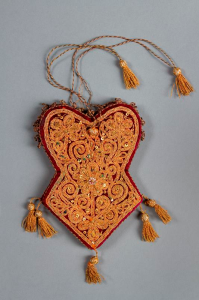23.03 – 23.06 2017
For the first time the Russian museum of Ethnography presents objects revealing common and distinctive features of ethnic, territorial and ethno-confessional groups of the Tatars in Russia.
The exposition gives visitor deep insights in resilience and development of Tatar national traditions in dwelling design, costume, cult objects, and applied arts. The exhibition focuses on the traditional costumes of the 19th -20th centuries, which were used by Kazan Tatars (the largest Tatar ethnic group in Russia). At the exhibition visitors can see festival and everyday-life clothes of the Mishars, the Kasimovs, the Kostroma Tatars, the Siberia Tatars, the Crimean Tatars, the Nağaybäks, and the Kryashens (baptized Tatars).
The special part of the exhibition is dedicated to crafts and artistic production which developed throughout centuries and continue to evolve today. Among them the most spectacular objects are jewellery and tanning as well as golden embroidery.
Man and woman headdresses, ornamental breastplates, tobacco pouches, towels decorated with silver and golden threads are, really the most splendid examples of the folk art. Exquisite décor often supplied with patches embroidered with seed-beads, silk ribbons and gold or silver cord.
The tradition of making ornamented leather shoes was known to the Tatars shoemakers- from times immemorial. As a rule currying, dyeing, and cutting were made by men, women usually sewed together details with metal, silk and cotton threads.
The Tatar jewelry art is distinguished by broad spectrum of various products and sophisticated crafting techniques. The majority of the objects were made in the second half of the 19th century – the period when the jewellery art reached its great heights. Craftsmen mastered great number of various jewellery techniques with roots in traditions of the Volga Bulgars, who knew the secrets of metal work from the profound antiquity. Jewellery brought fame and recognition to Tatar artisans who could transform goldsmithery into art.
At the exposition there are about 300 items which comprise “gold portfolio” of the museum collection and are the unique source for researches. This collection can attract attention of the most demanding auditorium

Young woman festival costume. Late 19th century. Tobolsk Tatars

Pouch. Late 19th century. Taurida Governorate, Bakhchysarai, Crimea Tatars

Woman headdress. Mid-19th century. Kazan Governorate. Kazan Tatars

